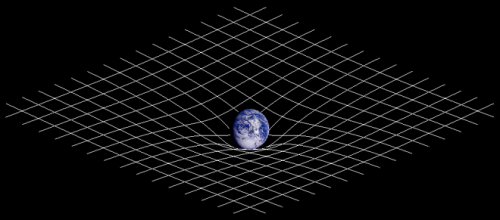May 3, 2013 report
New experiments set to detect gravitational waves

(Phys.org) —Over the next five years, Mansi Kasliwal writes in an astrophysics perspective in the journal Science, researchers will begin setting up experiments designed to detect gravitational waves. Kasliwal, an astronomer with the Observatories of the Carnegie Institution for Science located in Pasadena, California, says momentum is building in the physics community to find proof of the existence of gravitational waves. Thus, far, they are still considered theoretical.
Gravitational waves were predicted by Einstein's general theory of relativity. They are distortions in the fabric of space-time and are believed to occur in measurable amounts when massive objects such as neutron stars merge. They've yet to be seen, but the consensus among physicists is that they are real. Still, they can't be labeled a certainty until they are proven to exist by measuring them. That's what a team of physicists and astronomers the world over plan to do over the next half decade.
The idea is to deploy ultra-sensitive interferometers at various points around the globe. They are very large L shaped devices and work by measuring the time it takes for a photon delivered from a laser to move from one end of the device to the other. If a gravitational wave strikes, it should cause the length of the device to change, increasing or decreasing the time it takes for a photon to traverse the distance.
Most astrophysics believe that detecting gravitational waves is a matter of course, thus the purpose of deploying interferometers across the globe serves another purpose—discerning where they originated. The hope is that by collecting data at many locations at once, researchers will be able to work together to ascertain the direction from which the waves have traveled, and perhaps figure out what caused them to come about in the first place.
Kasliwal reports that the new highly sensitive interferometers will come online sometime in 2017, noting that some of them exist already, though they are not yet sensitive enough to detect gravitational waves. He adds that the project will be a hugely collaborative effort, especially if the interferometers begin detecting a lot of waves. Researchers will have to scramble and work together to get information from the detectors to operators of telescopes quickly enough to figure out where the waves might be coming from.
More information: Seeing Gravitational Waves, Science 3 May 2013: Vol. 340 no. 6132 pp. 555-556 DOI: 10.1126/science.1235956
Abstract
Gravity is responsible for the long-range order of the universe. Using Einstein's general relativity, we now think of gravity as the geometrical curvature of the four-dimensional fabric of space-time (1). Extreme cosmological events such as the merging of neutron stars or black holes induce ripples in the fabric of space-time (see the figure). However, these ripples, or gravitational waves, are extremely weak, and their detection has remained elusive. To measure the small signal, an interferometric detector is required that can detect strain to one part in 1021 (that is, a billionth of a nanometer for a kilometer-length interferometer). Such extreme gravity events are also rare, occurring only once every 10,000 years per galaxy (2). An advanced version of such a detector is designed to find gravitational waves on a regular basis (roughly tens of events annually) beginning in 2017 (3). This heroic experiment alone will be somewhat unsatisfying—gravitational wave interferometers will only be able to hear the wave and detect when something happens (literally "hear" as the operational frequency of tens to thousands of Hertz overlaps with the human auditory range). The interferometers will be blind to exactly where the merger occurs. To locate the source of the gravitational waves, collaboration between the physics and the astronomy communities together with extensive simulations are under way (4).
Journal information: Science
© 2013 Phys.org




















